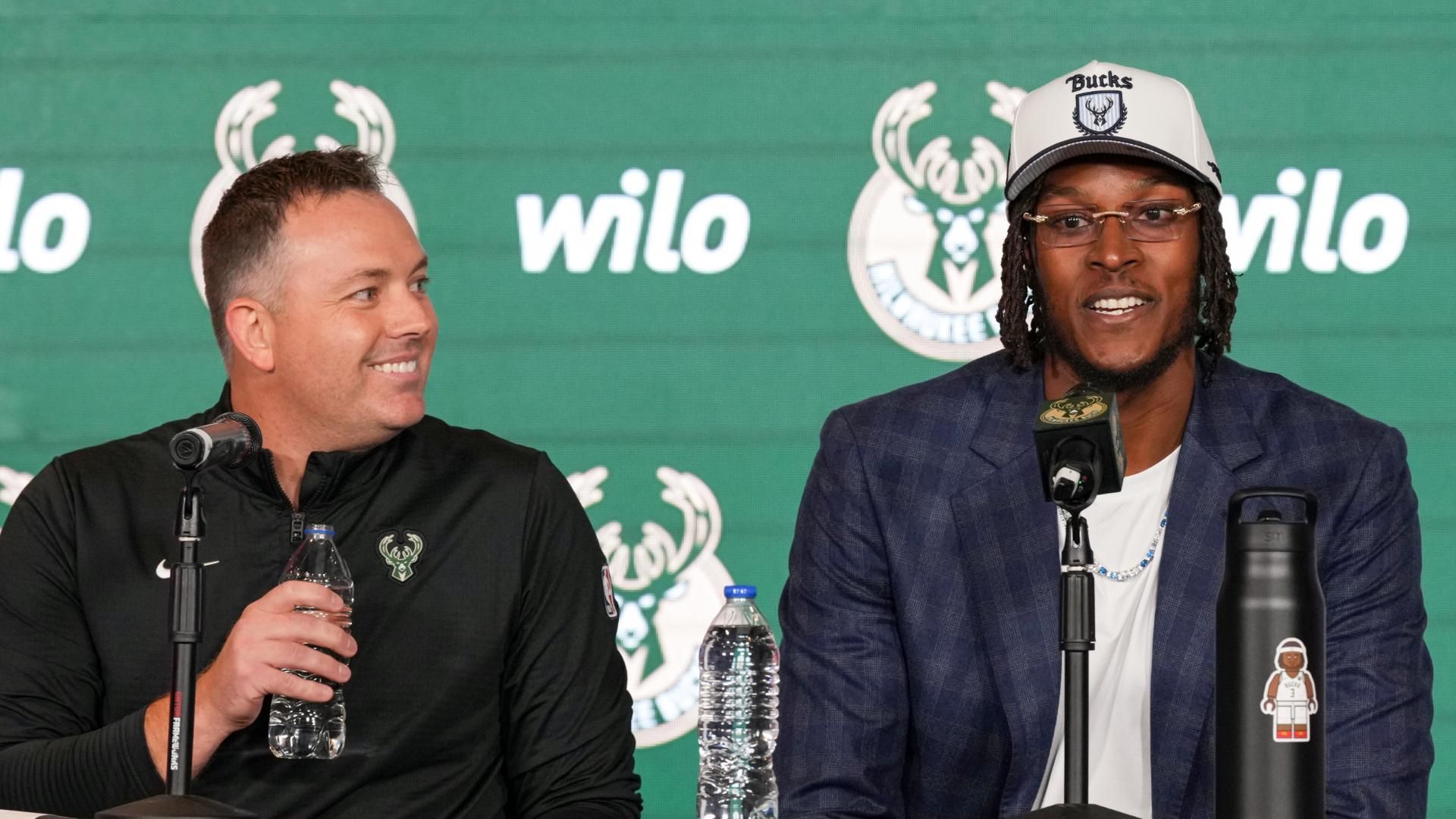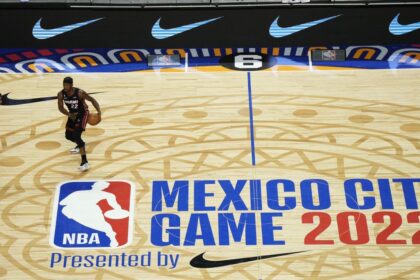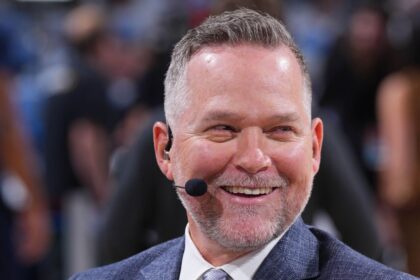The New NBA Collective Bargaining Agreement and its Effects on Free Agency
The NBA’s 2023 offseason was just beginning when the new collective bargaining agreement (CBA) was already facing criticism. Players and analysts were debating the implications of the new rules in the league.The 2024 offseason brought with it increased attention, especially with the introduction of the “second salary threshold,” which limited teams with high spending from adding players outside their own ranks. Draymond Green, power forward for the Golden State Warriors, further fueled the debate, stating that the new CBA had ruined the excitement of the annual free agency.“You either make $50 million or $2 million,” former player Austin Rivers said at the time. “It’s a joke. I can’t tell you how many mid-level players are signing for the veteran minimum in the NBA.”
Austin Rivers
Draymond Green’s post on Threads
Is Green right? Are other offseason trends here to stay? We analyze several key points, including whether the middle class of players is being marginalized and the state of restricted free agency.
Analysis: Reality vs. Fiction
The second threshold has ruined free agency.
Verdict: Fiction (for now) Draymond Green had a valid point. In the past, players like LeBron James, Chris Bosh, Dwyane Wade, and Kevin Durant generated great anticipation in their free agency decisions. However, the new CBA rules have notably diluted that anticipation. From the day after the Finals, teams can negotiate with their own free agents for new contracts. This led to figures like Kyrie Irving, James Harden, and others renewing before June 30th. The revised rules on extensions for rookies and veterans also influence, as players prioritize the security of long-term contracts. A player in the final year of their first-round contract can now extend it for five seasons instead of four, even if the first-year salary is less than 25% of the salary cap. Jabari Smith signed such an extension in June, and Jalen Johnson, Trey Murphy III, Alperen Sengun, and Jalen Suggs did so in 2024. In the summer, players like Jalen Brunson, Giannis Antetokounmpo, Lauri Markkanen, Donovan Mitchell, Anthony Davis, Damian Lillard, Jimmy Butler, Rudy Gobert, Brandon Ingram, Derrick White, Ivica Zubac, and Alex Caruso could have been free agents. Instead, each one signed long-term extensions.In the last three years, 51 veterans have signed extensions, including 26 in the 2024-25 season. Comparatively, 74 players signed veteran extensions between 2017 and 2023.Teams are taking advantage of the “stretch provision”.“The collective bargaining mechanism was very clear: we are trying to give teams an advantage to recruit, develop, and retain players,” said NBA Commissioner Adam Silver during the summer league. “It doesn’t mean there isn’t free agency, but in many cases, you have situations where players choose to stay in those markets. So, I don’t necessarily think that’s a bad thing.”
Adam Silver
Verdict: Done
A prominent agent posed the question before a series of summer league games in Las Vegas: “How many teams project to have cap space in the 2026 offseason?” Normally, the answer would be eight teams. But, as the Milwaukee Bucks demonstrated on July 1, projecting teams with available cap space can be a futile exercise.The Bucks also bought the $8.1 million owed to point guard Vasilije Micic. Those moves helped Milwaukee open up the space needed to sign Myles Turner to a four-year, $108 million contract.“Maximizing Giannis’ moment, our opportunities to win, I feel that’s always our responsibility. So it was really a decision of now versus the future,” said Bucks general manager Jon Horst in July, referring to the waiver and then the extension of the $113 million owed to star Damian Lillard over the next five seasons.
Jon Horst

The middle class of free agents has been marginalized from the market.
Verdict: Fiction
“The data doesn’t support this idea,” Silver said during the summer league. “If you look at the minimum players, low salaries, high salaries and there’s a middle group that you call the middle class, if anything, it’s slightly above where we were in the last years of the old collective bargaining agreement.” Silver was referring to 84% of players who signed minimum contracts for veterans and first-round rookies, whose first-year salary ranged from $4 to $20 million. That represents an 8% increase over the previous offseason.Of the 31 players mentioned, 19 changed teams in free agency. That 32% increase from last summer is the result of teams signing players using the non-taxpayer mid-level exception (an increase from five to ten), expanded trade rules, and the acquisition of free agents with a previous trade exception. For example, Atlanta acquired Nickeil Alexander-Walker in a sign-and-trade deal using a previous trade exception, and then used part of their $14.1 million non-taxpayer mid-level exception to sign Luke Kennard.
Since the 2017-18 season, the salary cap has grown from $99 to $154.7 million, while the total salaries of the players have increased from $3.3 billion to $5.4 billion. Restricted free agents Josh Giddey, Jonathan Kuminga, Quentin Grimes, and Cam Thomas are at a disadvantage.“There’s a misconception that players aren’t being compensated the same way as before. That’s not true,” said former Players Association president CJ McCollum last week. “Guys are making more money than ever. The middle class is making more money than ever.”
CJ McCollum
Verdict: Fact and fiction
Yes, Chicago, Golden State, Philadelphia, and Brooklyn currently have influence in contract negotiations. But the reality is that no team outside of Brooklyn (Thomas’s current team) has more than $14.1 million to sign any of those four players with an offer sheet. Even if the market were flush with cap space, there have only been two restricted free agents (Deandre Ayton and Matisse Thybulle) who have signed offer sheets since 2022. Kuminga and Grimes’ prospects are also affected by the first apron concerns if a sign-and-trade deal materializes. Because their outgoing salary only counts for 50%, the Warriors and 76ers are likely to be hard-capped in a sign-and-trade deal.But restricted free agency isn’t a new problem. For years, players who didn’t sign rookie extensions have navigated the strict rule, but only if they were willing to compromise on their next contract. Of the 14 former first-round players who received a qualifying offer since 2023 and then signed a contract, only three (Tyrese Maxey, Immanuel Quickley, and Cameron Johnson) had a starting salary of more than $20 million in the first season.
Kuminga would have been the fourth, but, according to Shams Charania and Anthony Slater of ESPN, Kuminga rejected a two-year, $45 million contract with the Warriors that would have included a team option.The second threshold has deterred teams from including bonuses in contracts.
Verdict: Done
Do you remember in March, when the decimated Dallas Mavericks couldn’t sign a 15th player because they were $50,000 below the first threshold? That was because $4 million in bonuses for Kyrie Irving, Caleb Martin, and P.J. Washington counted towards the salary cap.
The Dallas dilemma put teams on alert this offseason. Of the more than 150 players who signed a contract this offseason, none have negotiated bonuses in their contract. The list includes Irving and Minnesota Timberwolves forward Julius Randle, who received bonuses in their previous contracts that are not included in their current agreements. For comparison, 23 free agents signed contracts in 2023 and 2024 with incentives included. The decrease in incentives has also affected first-round extensions. In the 2022 and 2023 offseasons, 11 of the 26 players who signed extensions had a bonus in their contract. Since then, only Moses Moody of the Warriors has one. The Miami Heat guard Tyler Herro’s extension, signed before the 2023 CBA came into effect, is a strong reminder of why teams have taken a stance against negotiating bonuses. Herro has five, including those for being named MVP, All-NBA, and Defensive Player of the Year, and Miami receives a $2.5 million fee against both the first and second thresholds.The current CBA penalizes teams that recruit well.
Verdict: Done, unless you plan in advance
McCollum made an interesting comment recently when discussing the impact of the new CBA on the draft.McCollum’s comment leaves much to unpack. First, the statement is correct if we base it on the financial disadvantage that teams face when players with maximum rookie extensions are named All-NBA, Defensive Player of the Year, or MVP in their fourth season. The Cleveland Cavaliers and the Detroit Pistons took on an additional $8 million in salary this season ($45 million over the life of the contract) when Evan Mobley was selected Defensive Player of the Year and Cade Cunningham was named All-NBA. The counterargument is to address those extensions as Oklahoma City has done with Chet Holmgren and Jalen Williams. The Thunder have protected themselves in case either of the players earns regular season honors. Unlike Paolo Banchero’s extension with the Orlando Magic, which includes a 30% scale (his $239 million extension increases to $287 million), if he is named All-NBA, MVP, or Defensive Player of the Year, Holmgren does not have it in his contract. Williams’ salary next season increases to the same amount as Banchero, but only if he is named MVP, Defensive Player of the Year, or first team All-NBA. There are scales for being named second team and third team, but with a lower percentage. General Manager Sam Presti and the Thunder also had the foresight to weigh future extensions in the way they aligned their finances and built draft assets. In the last two seasons, OKC has signed Isaiah Hartenstein, Isaiah Joe, Aaron Wiggins, Jaylin Williams, and Ajay Mitchell to contracts that decrease, have team options, or are partially guaranteed. And the champions won’t be ending that plan anytime soon. The Thunder have a surplus of 13 first-round picks and 16 second-round picks in the next seven years, with up to four first-round picks in the 2026 draft alone.“You shouldn’t be penalized for recruiting well,” McCollum said. “Oklahoma City is going through this now, where you have to pay a lot of players who are really good. And recruits, you shouldn’t be penalized for recruiting well. You should be able to pay and keep the players you’ve recruited. And when you have those windows where you really have a chance to compete and win a championship, you shouldn’t have such severe restrictions.”
CJ McCollum










